Light management of chicken flocks
Light is an important environmental factor affecting chickens. It is necessary to know that suitable light can stimulate the secretion of sex hormones in hens, enhance the activity of ovaries and fallopian tubes, accelerate the formation and discharge of eggs, and the development of fallopian tubes, thereby improving the production capacity of hens. We should pay attention to these techniques when using chicken poultry cage equipment to raise chickens.
Do not reduce the lighting time during the laying period. The first time of adding light is 18 to 19 weeks old, and the light is generally started by the standard weight of 18 weeks old. For example, the standard weight of 18 weeks of age is 1.55 kilograms, that is, the light stimulation is started with the weight of 1.55 kilograms, but no later than the end of 19 weeks. The addition period is determined according to the weight of the chicken group, and it is generally preferred once a week. The time for adding light shall not exceed 1 hour, and the period of addition shall not be more than twice a week, nor less than two weeks. According to the light cycle to determine the duration of the light, generally the first two light stimulation is better, if the light is applied once a week, it is recommended to add light for the first two times, and then increase by half an hour every week until 14~16 hours; If you add twice a week, split the one-week addition time into two. The peak lighting time must not be less than 15 hours. The upper limit of the illumination time is 16 hours, and constant illumination is applied when the upper limit is reached.
Be sure to consider the consumption and increase of the flock before adding light. The increase in illumination is mainly due to the fact that the chicken population does not meet the standard and needs to stimulate the flock to feed, thereby increasing the weight of the chicken population. Lighting management must take into account the effects of natural light length and seasonal factors to develop a reasonable lighting program. When supplementing the light, the power supply should be stable, and the floor area should be about 3 watts per square meter.
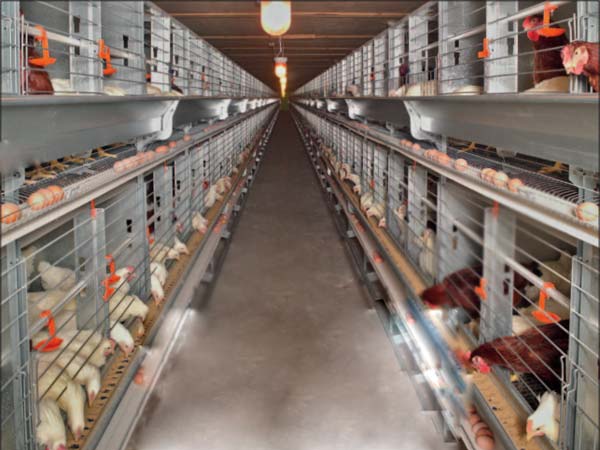
Brooding period. Both chicks and broiler chickens are in a growing period. At this stage, light management should promote the healthy growth of chicks and have a high survival rate, but prevent hens from reaching sexual maturity prematurely. Chicks can grow well under low light intensity, but in order to make them eat and drink as early as possible, the first week of light can reach 12 hours per day, and the light intensity can be larger.
Breeding period (7-20 weeks old). The main purpose of light management is to control growth and development, and to achieve sexual maturity at the appropriate age. Premature sexual maturity, not only the egg weight is small at the time of opening, but also due to insufficient maturity, it will be discontinued shortly after the start of production, and then it will not be stable and high yield. From the stage of young chicks to 10 weeks of age, the length of light duration does not have much effect on sexual maturity, while the age of 10-18 weeks is critical.period. The lighting time is short during this time. Chickens raised in closed houses are completely artificially illuminated, and the duration and intensity of light can be controlled.
Laying period. The principle of light management during laying period is to enable hens to start production and reach a peak at the right time, giving full play to their egg production potential. Therefore, the illumination time should be long, and it should not be gradually shortened, and the illumination intensity should not be weakened. During the laying period, it is generally used with increasing or constant illumination, but not less than 14 to 17 hours of light per day. Laying hens are very sensitive to light hours. Generally, they start from 21 weeks of age, and give chickens 13 to 14 hours a day. After that, they increase by 30 minutes per week and increase to 17 hours to maintain the peak of egg production.
After determining the addition period, do not change it at will. In the process of adding light, if there is a large difference between the actual body weight and the standard body weight, the lightening interval can be appropriately extended, but it must not be longer than two weeks at the latest. From the beginning of the light to the peak of the egg production, it is generally better to stimulate it continuously for more than eight times. The light intensity should not be arbitrarily changed during the addition of light, which has an effect on the growth and development of the chicken in the automatic poultry farming cage.
Laying hen cage manufacturers analyze the causes of calcium deficiency in laying hens
In the process of raising chickens in automated layer cages, the comprehensiveness of feed nutrients is the basis for improving the high yield of layer hens. Sometimes the egg shell becomes thin and easy to break, and the color varies from light to dark. It means that the laying hens are lacking in calcium.
The first layer lacks calcium content in the feed. Farmers should know that calcium is an essential nutrient substance for laying hens to grow and lay eggs. It should be adjusted according to the growth of the laying hens and the laying situation. Therefore, farmers should pay attention to calcium supplementation for laying hens.
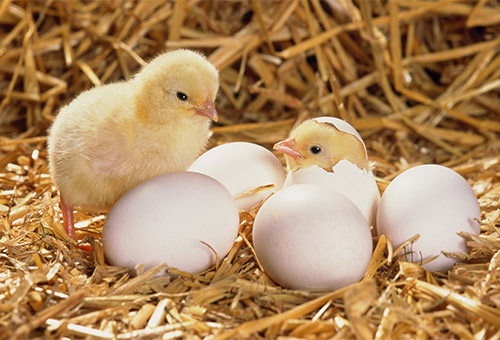
The nutrients of calcium and phosphorus in the feed are not balanced. Farmers should pay attention to whether the nutrients in the breeding are balanced. Too much phosphorus will affect the absorption of calcium. Calcium and phosphorus affect the strength of the eggshell.
Long-term cage breeding and lack of light: Most farmers now use the method of raising chickens in layer cages to raise layer hens. Most of the chicken houses are closed, so the layer chickens cannot get effective light. Farmers need to purchase lighting equipment for artificial lighting. But if the farmers do not perform the proper order, it will affect the absorption of calcium in the laying hens. At the same time, when the supplemented concentrate calcium is less, there will be a lack of calcium.
The above are the several reasons why layer cage manufacturers have summarized the calcium deficiency of layers for farmers. I hope that the above description can bring some help to farmers.
How to fully master the skills of controlling high temperature and high humidity in chicken houses?
Higher temperatures in summer can lead to reduced appetite and reduced feed intake. As a result, the metabolic capacity of the chicken in layer battery cage, the nutrient intake of protein, vitamins and minerals is seriously insufficient, resulting in a decline in production performance. Therefore, dietary formula must be adjusted to meet heat stress. To meet the nutritional needs of chickens.
The caloric content of various nutrients varies greatly during digestion. Protein produces the most heat, and fat produces the least amount of heat. In order to reduce the heat dissipation burden of the chicken, the crude protein level should be reduced as much as possible to ensure the essential amino acid content and amino acid balance. Avoid excessive protein and increase the proportion of fat feed by adding fat. Heat stress in laying hens leads to reduced feed intake, resulting in insufficient energy intake.

Adjust the paper feed mode and lighting time. In the summer, the temperature is higher at noon, the appetite of chicken is low, and the temperature is suitable in the morning and evening. Chicken has a strong sense of hunger. At this point, the feed stimulates appetite, increases feed intake, and has a lower peak heat production. Time, because the maximum heat production related to digestion is 3-5 hours after feeding, should be avoided after 9 am to meet the nutritional needs of chicken production or growth, improve its anti-stress ability, broilers can rest the lighting system at night , low light illumination for 1 hour, light off for 2-3 hours, and so on. Egg laying hens can turn on the lights around 1 am, let the chickens heat up, drink water and feed, and the chickens start laying eggs when they are bright, so as to avoid laying eggs at high temperatures at noon. And reduce heat stress. It is estimated that 80-90% of consumption is consumed when it is cool. For free-fed broilers, two feeds can be supplied at the same time, one material is normal, the other material has a low nutrient concentration, and the chicken can be selectively eaten as needed. Tests have shown that this method can improve weight gain and feed compensation. Reduce the cost of feeding and mortality of poultry farming equipment for sale.
During heat stress, 80% of body heat is dissipated by evaporation. Try to stimulate the chicken to drink plenty of water to ensure that the drinking water is adequate and cool. Since low temperature water can carry away more heat in the body, it can relieve heat stress and reduce heat stress. The adverse effects of heat stress on feed intake. However, drinking water must be hygienic, preferably deep well water. When the house is exposed to high temperature and high humidity (temperature exceeds 35 ° C, humidity exceeds 70%), the following measures should be taken to prevent acute death. Close the wet curtain and turn on all fans to remove moisture from the house. When the humidity exceeds 80%, the side windows and doors in the front half of the house should be opened immediately, so that the air inlet area is larger than twice the area of the air outlet to achieve rapid dehumidification for poultry farm equipment suppliers.
What problems need to be regulations on raising chickens?
With the advancement of economic development technology, people no longer use the traditional way of raising chickens. The use of laying hens to raise chickens can improve work efficiency and reduce labor intensity. What problems need to be regulated by laying chickens with poultry cages for sale ?
First. Disinfection is an effective method to ensure the hygiene and safety of chicken houses. Correct and reasonable disinfection can kill the pathogenic microorganisms in the chicken house in time, but many farmers do not pay attention to disinfection or disinfect according to the formal operation procedures. As a result, disinfection has no effect, and the house has poor sanitary conditions and increased disease.
Second, immunization is an effective method to prevent infectious diseases of chicken flocks. However, the vaccine operation of many farmers is not standardized, which will lead to the failure of flock immunity, which not only increases the cost, but also has not achieved good results.

Third, when raising chickens, there will be many chicken farms around the chicken house. Sometimes they will go to other chicken houses to see each other, but this is not good. Going to other chicken houses is not safe, so it will The bacteria are brought to their own chicken house to bring disease to the chicken.
Fourth, because the weather changes in the four seasons are relatively large, we must do a good job of preventive measures for weather changes, but now many farmers do not take active preventive measures when encountering sudden changes in weather or other stress factors, causing chickens to become sick. If the weather is cold, warm measures should be taken; if the weather gets hot, take measures to reduce the temperature and pay attention to ventilation.
Fifth. Save the chicken feed to avoid mold. If the chicken eats, it will be sick. At the same time, it should also be noted that the chicken feed should not be replaced at will, so as to prevent the chicken from adapting and causing the chicken to become sick.
How to reduce the cost of raising chickens in chicken cage
If the number of chickens raised by the farmers is large, then the cost of raising chickens will be high. For example, Chicken Breeding Equipment should be use, and chicken feed should be used. For better economic benefits, how many farmers can improve production performance. , reduce the cost of feeding?
Different breeds of chickens can be raised according to different stages, making full use of local cheap feed resources and self-preparing chicken feed, which can reduce feed costs. After all, the price of the feed itself is very expensive, and there is the economical use of chicken feed. Because of the use of the chicken cage, the structure of the chicken's trough should be reasonable. The upper edge of the trough should be edged and concave to prevent splashing of the feed. Use the trough should pay attention to adjust the height with the growth of the chicken, so that the trough is always 2 to 3 cm higher than the chicken back.
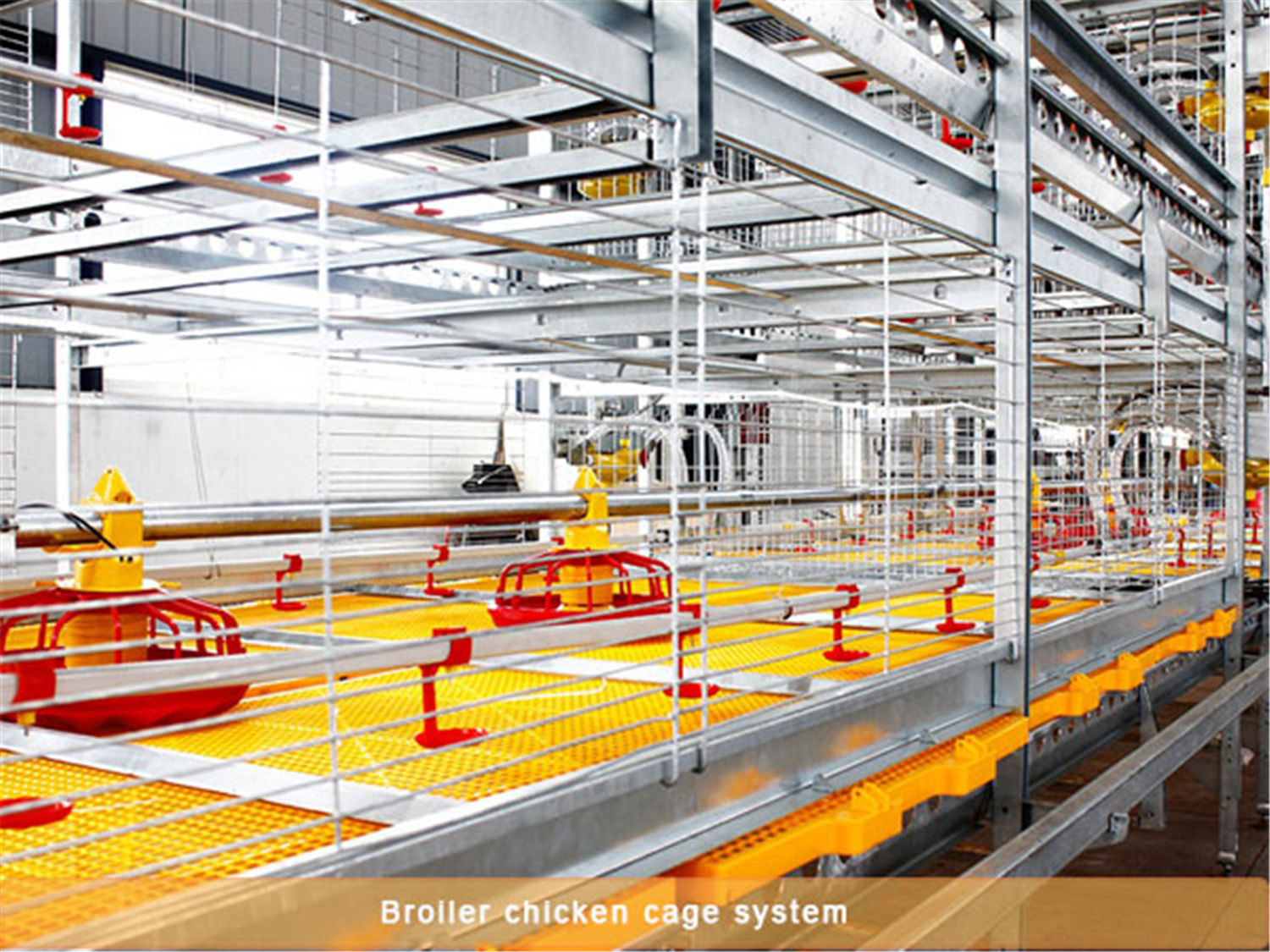
Chicken feed is less to feed, and can not be overfilled at one time. Otherwise, the chicken in the chicken cage will be wasted, which is also a waste of cost. Timely elimination of chickens of no value to reduce the cost of feeding, low yield and no laying hens, but also timely elimination. Pay attention to the prevention of disease management, improve the disease resistance of chickens, and reduce the cost of treatment. At the same time, do a good job in the hygiene of the feeding equipment, create a good growth for the chicken, and ensure stable production and high yield.
The most suitable temperature for chicken laying is 13 °C ~ 21 °C. If the house temperature is lower than 8 °C in winter, 1.5 kg of feed per 100 chickens per day, and the egg production rate is reduced. In summer, the climate is hot and the chickens eat less feed, but the egg production rate also drops. Therefore, adjusting the temperature inside the house is also important for reducing feed consumption. Keeping the feed and feed in a safe place is easy to cause mold. It is also a waste to purchase or formulate too much feed in one time and leave it for a long time, which will cause a decline in nutritional value. In addition, to prevent rats and birds from entering the poultry cage equipmentto steal feed.
These are some of the ways to reduce the cost of raising chickens, and hope to bring benefits to farmers. Increase farming efficiency
Feeding nutritional requirements when using broiler cages to raise chickens
Many broiler farm cage manufacturers believe that the main task in the rearing period is to cultivate healthy, well-balanced chickens with a body weight that conforms to the normal growth curve to ensure timely production. Therefore, in production, we must pay full attention to the dietary coordination of growing chickens. The content of crude protein in the diet should be appropriately reduced, which can be gradually reduced from 18% to 19% during the brooding period to 16% to 15%.
At the same time, reduce the energy concentration in the diet. When compounding diets, low-energy feeds such as rice bran and wheat bran can be used to replace part of high-energy feeds such as corn to help exercise the stomach and intestines, improve the digestion of the feed, and make the growing chickens have a good body condition. Pay attention to supplementing vitamins and minerals. The content of calcium, phosphorus, selenium, zinc, etc. and the ratio of calcium to phosphorus in the diet should be appropriate.
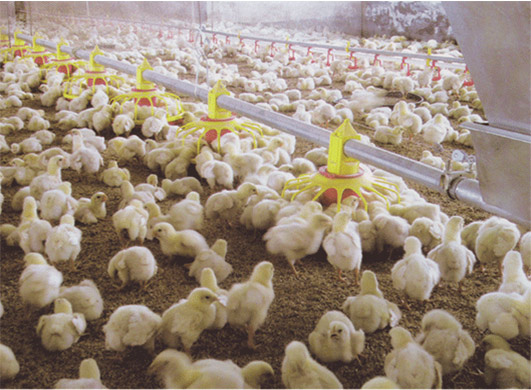
During the rearing period, the feed should be changed at least twice at the age of 6-7 weeks and at the age of 16-18 weeks. There must be a transitional period for each refueling. It is not possible to change all suddenly, so that the chicken has a process of adaptation. Especially from the brooding period to the rearing period, the replacement of feed is a great turning point. The nutrient content of feed, such as crude protein content, has dropped from 18% to 19% to 15% to 16%. Changes in feed ingredients can easily change the palatability of chickens and reduce feed intake. If they are not managed well, chickens are prone to disease.
Therefore, the following methods can be adopted for feed transition. From the first 1 to 2 days of the 7th week of age, 2/3 of the breeding period feed and 1/3 of the breeding period feed are mixed and fed. For 5-7 days, use 1/3 of the brooding period feed and 2/3 of the rearing period feed to be mixed and fed. From the 8th week of age, they are completely fed with feed during the growing period.
The first kind of feed change method is relatively detailed, and it is often used when the composition of the chicks and feed species changes greatly. The third refueling method is relatively crude, and experienced farmers and broiler cage manufacturers believe that it is generally used when the composition of adult chickens and feed species changes little. The second refueling method lies between the two and has a wide range of applications.
The above are the precautions when using broiler cages to raise chickens. I hope that the above content will be useful for novice farmers.
Use poultry farming equipment to raise layers can save more worry
Raising chickens requires not only physical labor, but also technical labor. With the gradual expansion of breeding scale, the requirements of epidemic control, temperature control, food control and egg collection are getting higher and higher. So it's a lot of work, a lot of hassle. The use of poultry farming equipment can make chicken farms become effortless, why say?
First of all, poultry equipment can carry out disinfection work. Disinfection is divided into before and after entering the column. When our chicken house is built, we should carry out careful elimination work, so as to ensure that the chickens are not infected by bacteria when entering the pen. In the breeding process of chicken manure, water, people into the chicken farm will breed or bring bacteria, so the chicken coop should be regularly disinfected. After the market, but also seriously sterilization, so as to reduce the impact of bacteria on the chicken.
Secondly, poultry farming equipment can carry out epidemic prevention work. We all know that a batch of chickens to have many times of epidemic prevention work, large farms of thousands of chickens, if relying on artificial to do epidemic prevention work is a very huge project, but also in and out of the hen house will bring bacteria, and fully automated chicken equipment can control the number of chickens immunization dose, do a good job of epidemic prevention.
Furthermore, the chicken equipment can control the temperature. Incubation of eggs, growth of chicks and improvement of single rate of laying hens all need specific temperature. Artificial temperature control will have temperature deviation due to the change of four seasons, while battery chicken cage in Zimbabwe has temperature setting function, which can keep constant temperature to make chickens grow quickly and lay eggs effectively.
The above is the content that chicken farm equipment suppliers shares with you today. If you want to know more about pig raising equipment, please continue to pay attention to this site, or call for consultation.
Three Effective Ways to Reduce Costs of Poultry Feed for Chickens
First of all, chicken can obtain higher economic benefits. Self-made feeds: At present, the prices of commercial compound feeds produced by the feed processing sector are relatively high. Farmers may purchase full set of chicken In order to reduce costs, it is best for farmers and chicken farmers to feed their own chicken. Use local produce or self-cultivated food and other agricultural and sideline products for food preparation and try to be as comprehensive as possible.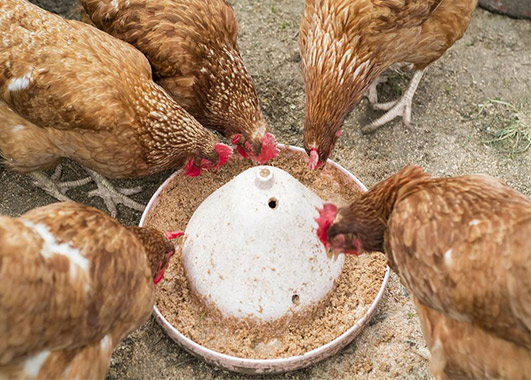
Secondly, purchase of finished feed and then re-preparation: In order to spend less to feed, you can buy a lower price of compound feed. However, due to its poor quality, in order to ensure the nutritional needs of chicken, you can add some homemade soybean cake, cottonseed cake, peanut cake and so on. You can also purchase more fish meal, blood meal, bone meal, amino acid, and other additives, and feed it evenly with the feed.
Thirdly, as the season changes, the feed intake of chickens will also change. In summer and autumn, where the temperature is higher, the feed intake of the chicken is reduced, and the protein feed and amino acid content of the diet should be appropriately increased. When the winter chickens are in season, the food intake will increase, the protein feed and amino acids in the diet should be reduced appropriately, and the amount of roughage should be increased appropriately to save costs.
More...
Treatment measures for laying hens and anus
Use a comprehensive and high-quality feed in your chicken cage for sale; 2 add methionine, vitamins and trace elements to the feed; 3 spray the body surface and environment with a 2.5% dilution of 2.5% bromide, use it for 2 days, or use internal and external. The anthelmintic drugs are mixed for 250 to 500 kilograms per bag for 3 to 5 days.
The chickens that are used to the individual habits of the feathers are only resolutely eliminated.
In order to prevent the occurrence of tubal inflammation, high levels of amoxicillin and doxycycline are added to the drinking water for 3 to 5 days. Add high quality quick fix in drinking water. Increase the amount of vitamin C used in the feed. Poultry farmers shouldn't ignore the importance of environmental control system.
Farming Points and Management For Free-range Chickens
Farmers can choose the right brooding season in order to facilitate the grazing of ecological chickens. The best season of farming is in March to May, when the survival rate of brooding is high. By the middle chicken stage, due to suitable temperatures and long hours of outdoor activities, it can be fully exercised and exercised, resulting in strong physique, which is very beneficial to natural grazing, feeding and prevention of natural enemies in the future. Spring chicks are sexually mature and have long duration of egg production, especially chicks hatching in early spring.

Feeds on ecological chickens must be organic feed. Therefore, when planting ecological chicken feed ingredients, it must comply with the requirements of organic foods, and animal feeding supplements that are artificially supplemented must also comply with the standards for the production of organic foods. It is forbidden to add chemicals during the production of artificial feed to ensure the quality of ecological chickens. The quality of natural feeds depends on the natural environment. There are natural forages, mature fruit and various natural insects. Only ecological chickens have enough natural feed and nutrition to produce high-quality products with high nutritional value and nourishing properties.
